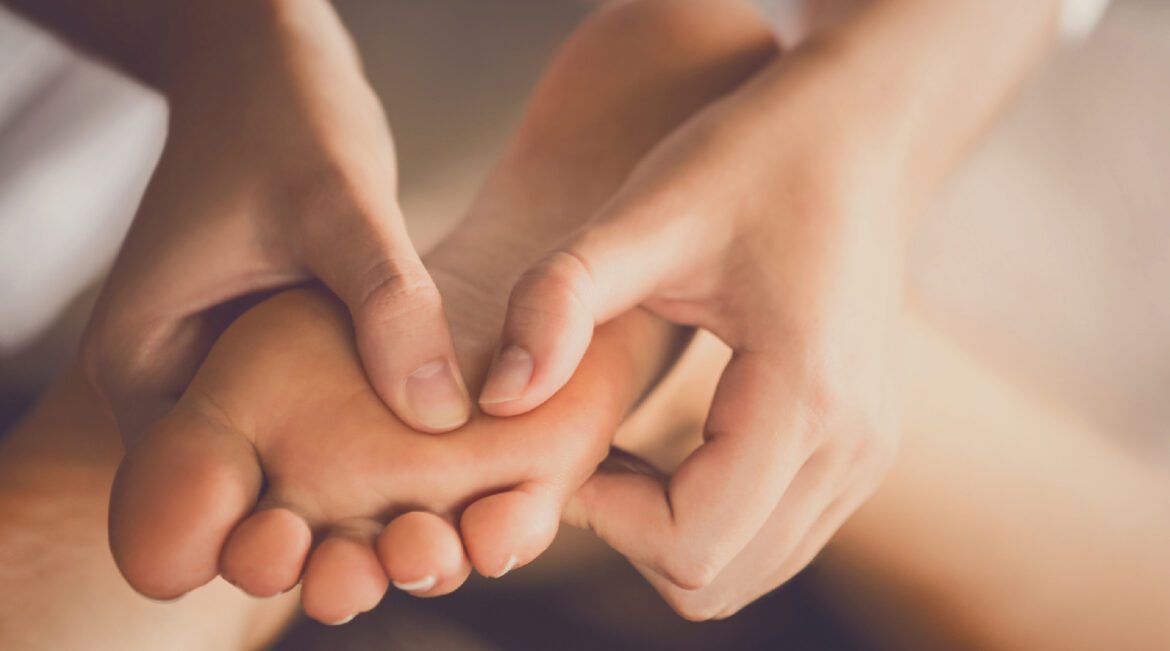For most of us who are physically active (and/or simply clumsy), it seems physical injuries are just a part of life. Whether it be strains, sprains, pulls, tears, or even all-out broken bones, by our late 20s, most of us have had our share of physical traumas.
 By our 50s, like me, the list of injuries has manifested into a chapter of humorous stories and a closet full of crutches, knee braces, and walking canes. From a kneecap break due to tripping over luggage, to a tibia fracture on the ski slopes, and a shoulder tear when covering hurricanes while working in television news, my injuries and surgeries have created a myriad of physical consequences, and a fair number of scars.
By our 50s, like me, the list of injuries has manifested into a chapter of humorous stories and a closet full of crutches, knee braces, and walking canes. From a kneecap break due to tripping over luggage, to a tibia fracture on the ski slopes, and a shoulder tear when covering hurricanes while working in television news, my injuries and surgeries have created a myriad of physical consequences, and a fair number of scars.
When we catch sight of a scar, it is normally the physical aftermath of an abrasion or laceration to the outermost layer of the skin (epidermis). Internal scar tissue is obviously non-visual and resides internally often on or around soft tissue, a bone, muscle, tendon, or ligament, long after an injury has healed.
Why? Scarring is an essential part of the body’s natural healing process after damage. Collagen builds at the damaged site, helping to heal and strengthen the wound. However, scar tissue (both internally and externally) can cause chronic pain over time due to its non-flexible nature.
A few years ago, I was reading about Neuromuscular Medical Massage Therapy (NMT), an aggressive clinical discipline where medical massage therapists work to alleviate chronic pain and nervous system disorders.
“NMT, known as Neuromuscular Massage Therapy, is a highly specialized form of medical massage utilizing respective modalities including Proprioceptive Neuromuscular Therapy (stretching technique utilized to improve muscle elasticity), trigeminal point therapy, myofascial disciplines (for scar, muscle, and general adhesions), and neural entrapment release,” said Chance Epps, Neuromuscular Massage Therapist, LMT.
According to Epps, an instructor of NMT who has worked in the field for nearly two decades, “scar tissue from trauma or even surgery can build and/or expand in the hypodermis (bottom layer of the skin), integrating and/or anchoring into healthy tissue.”
Left unchecked, it can cause a myriad of problems like muscle atrophy, inflammation, consistent throbbing from a lack of blood flow, reduced range of motion, and in extreme cases, integration of organ tissues.
“An overgrowth of scar tissue can also lead to frozen shoulders and torticollis (neck muscles contract, causing the head to twist to one side). Sadly, a one-inch tear can create a patch of scar tissue two inches around the injury, essentially doubling in size. Though the scar tissue makes the area stronger to decrease further injury, that tissue can become quite painful,” Epps said.
Medical massage disciplines such as cupping (using suction to increase blood flow), carbon fiber friction (manipulation performed on tendons), and gua sha are often used in NMT to help increase blood flow to impair scar tissue.
“Skin heals and grows from the inside out,” Epps said. “The more blood we bring to the injured location, the faster it can regenerate. We also see women with deep wounds, like C-sections, where not only the skin is damaged, but muscles are in the mix. As we impede and disintegrate the scar tissue, the pelvic muscles can become stronger.”
Accordingly, by crippling the adhesions, the body can also go back to homeostasis (optional functioning) to continue to heal more effectively.
“Think of scar tissue as an anchor; it is not mobile and does not move as our bodies ambulate through life. That lack of movement can cause long-term problems while also creating horrible postural habits,” Epps said.
Additional NMT therapies can include support for carpal tunnel syndrome, hip/piriformis syndrome, plantar fasciitis, circulation, nerve compression, repetitive movement injuries, and even temporomandibular disorder, more commonly known as TMJ.
Personally, after learning about NMT, I gave it a try in hopes of helping my hurricane-related shoulder injury. After only a couple of sessions the pain of nearly two decades had subsided. I had no idea the pain was even a result of scar tissue.
In my opinion, neuromuscular medical therapies are one of the best kept secrets when it comes to physical wellness, whether it be simple scar-eroding techniques, or more serious disciplines including neurological, skeletal, and/or muscular imbalances.
For more information on NMT, visit the American Institute of Alternative Medicine.

